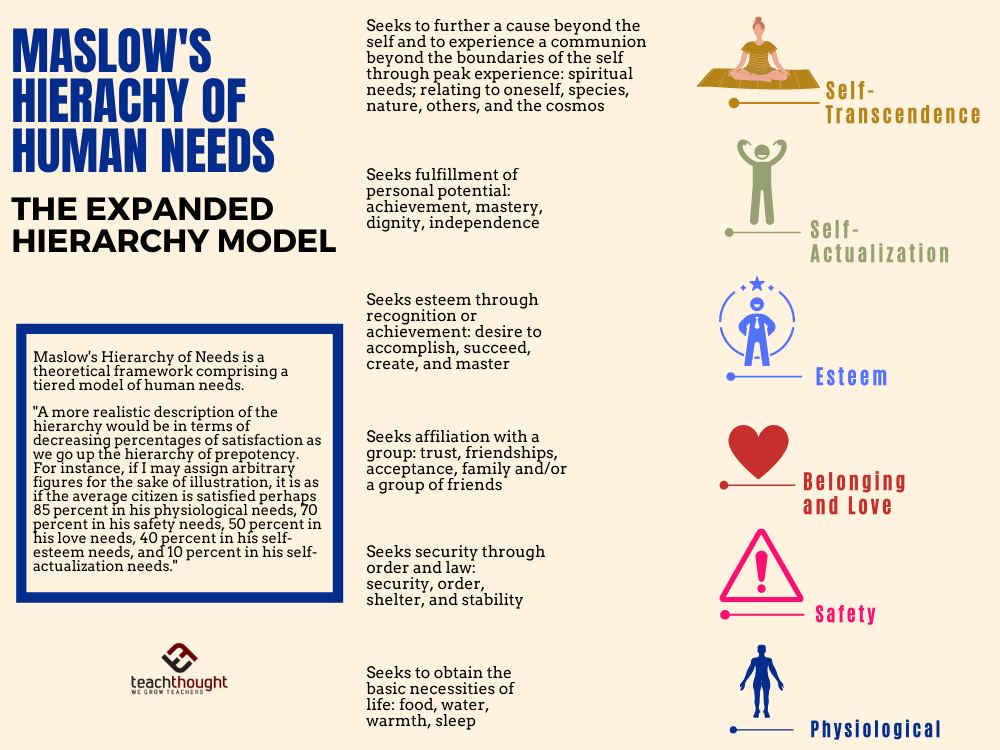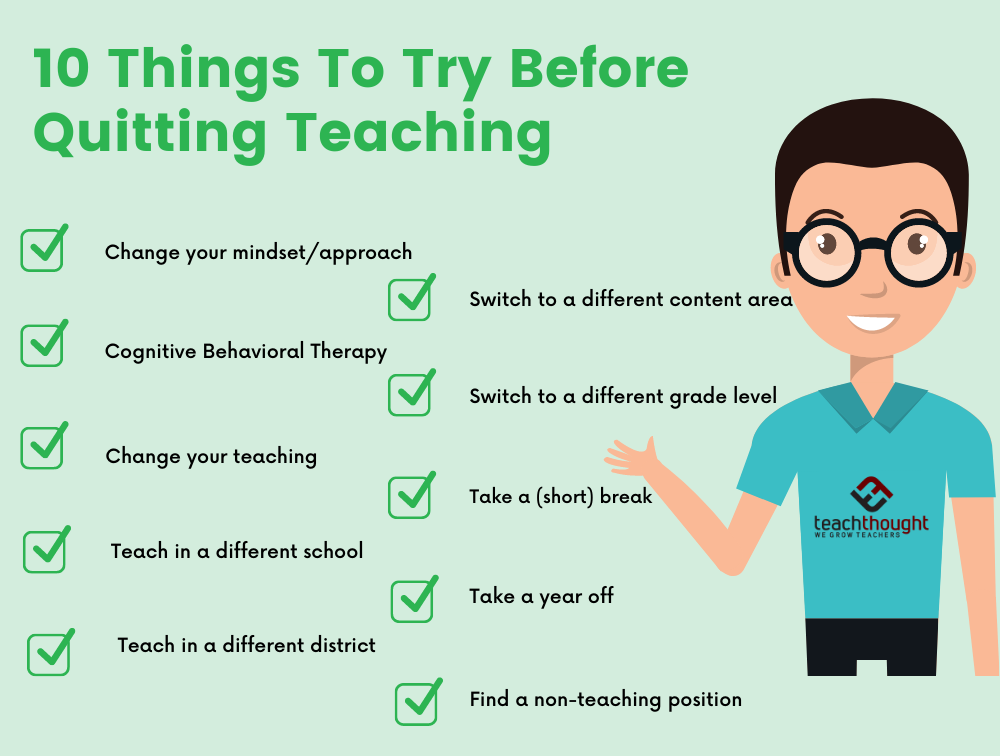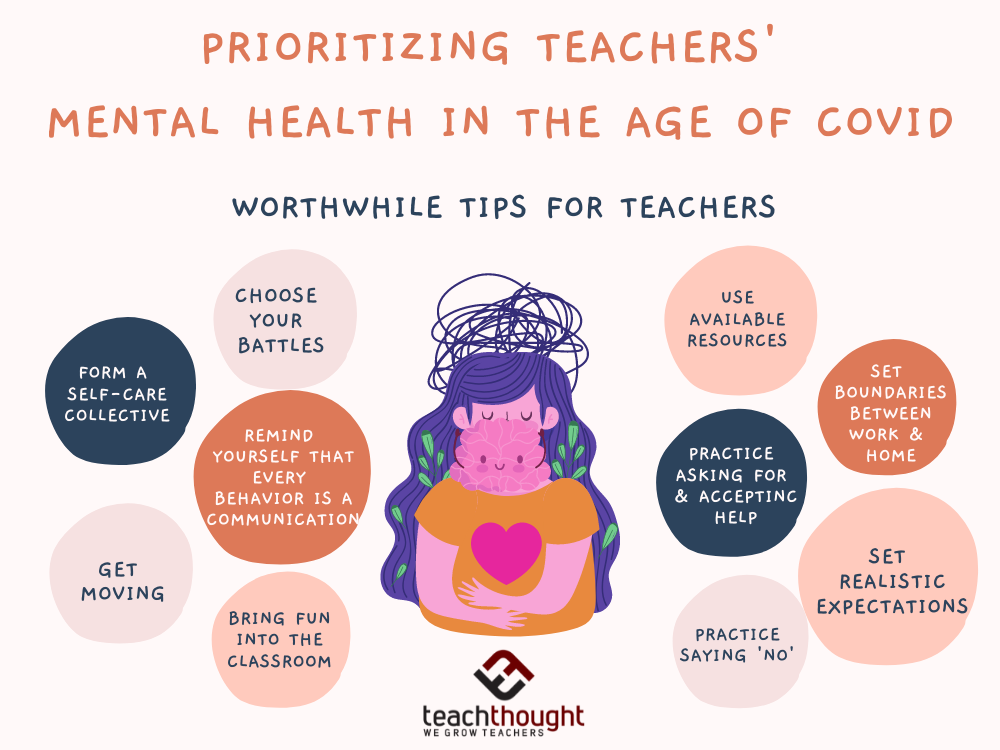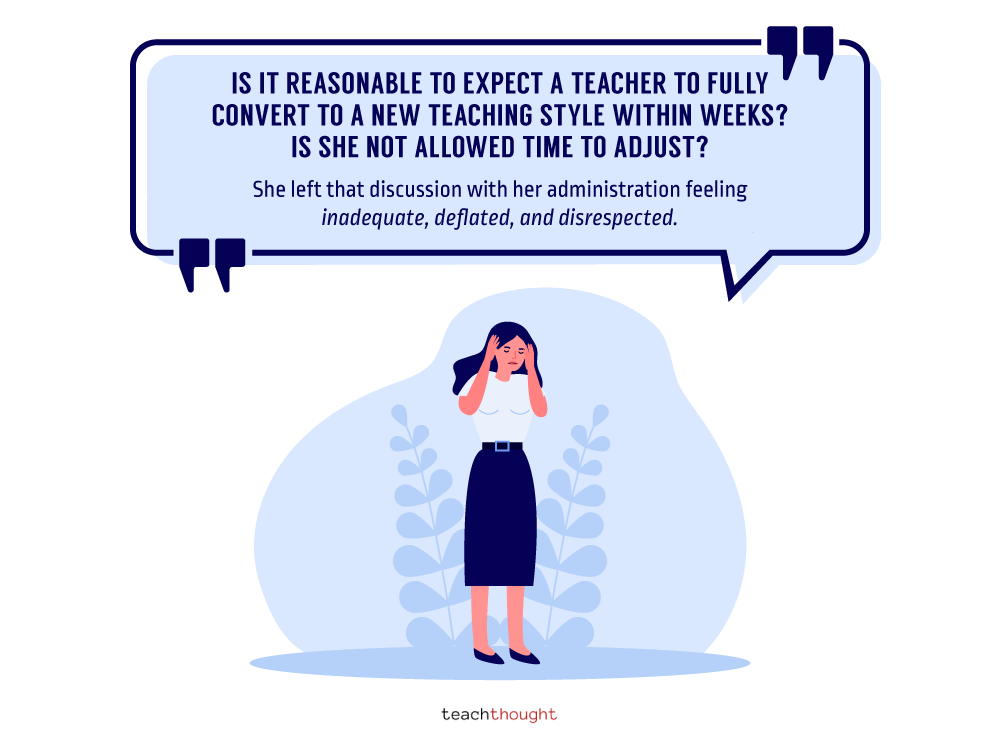Tag: Whole Teacher
30 Reflection Prompts For Teacher Well-Being
The following metacognitive prompts can help teachers reflect on the full picture of being an educator, including their well-being.
What Is Maslow’s Hierarchy Of Needs?
Maslow’s Hierarchy of Needs is a theoretical framework comprising a tiered model of human needs often depicted as a pyramid.
10 Things To Try Before Quitting Teaching
If you would’ve told me that rather than quitting teaching, I should ‘try counseling,’ I probably would not have responded favorably.
It’s Time To Face Some Difficult Truths About Teaching
Many teachers don’t have the luxury of deciding what’s sustainable for them. In these cases, they somehow ‘survive’ or they quit.
Learning Styles Vs. Multimodal Learning: What’s The Difference?
Instead of passing out learning style inventories & grouping students accordingly, teachers should aim to facilitate multimodal learning.
10 Thoughtful Ways To Improve Teacher Mental Health
We can’t control everything and apologizing for things out of our control can set unrealistic expectations of teachers.
Why Good Teachers Quit
The push is to do more, do it faster, improve the student’s grades and, more importantly, their standardized test scores.
The Best States To Live And Work As A…
What you consider to the best state to live in and work as a teacher depend on what you value as a…







